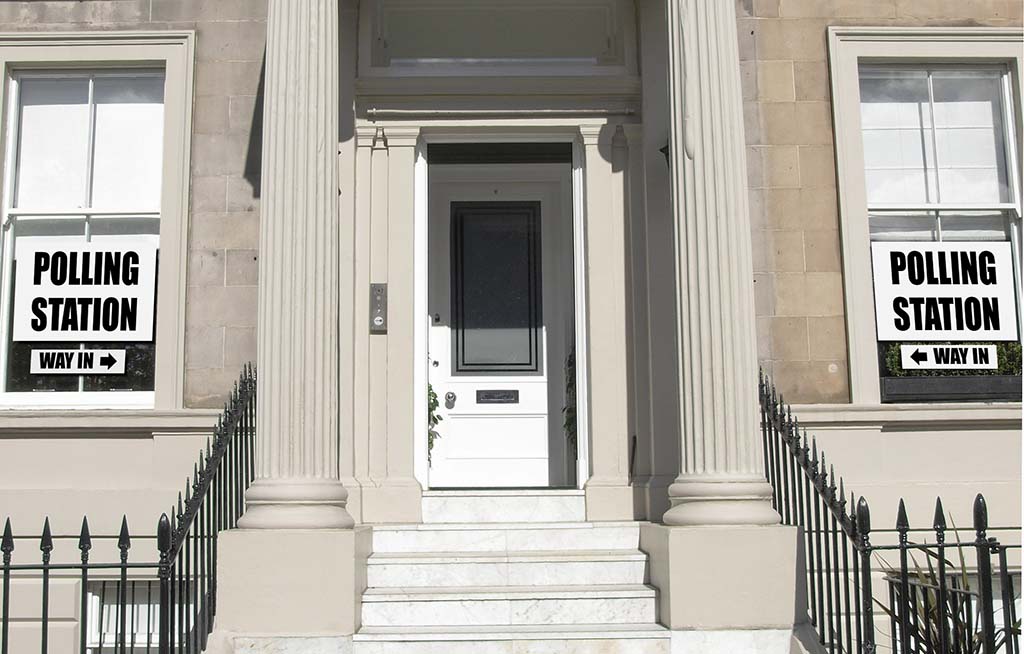A commitment to political inequality lies at the heart of democracy. However, just what it means to achieve this in practice is far from clear. The background work on political equality as part of the Review stresses the importance of examining political inequality through studying empirical evidence on patterns of political participation, such as voting, as well as political representation, with a view to understanding examining how these are connected to political influence and policy formation.
A panellist’s introduction, by Tim Besley
There are three chapters in the review that deal with aspects of political inequality. Ansell and Gingrich conducts an extensive empirical analysis based on UK data looking mainly at voting patterns and representation. Cage provides a commentary that offers some additional insights and connects the discussion both historical debates and discussions elsewhere. In their perspectives piece Beramendi, Besley, and Levi argue that the pursuit of political equality is motivated by the idea that equal consideration should be given to the views of all citizens in a democratic polity. The link to some of the philosophical literature and, in common with Ansell and Gingrich and Cage, they also look at empirical patterns of participation and political representation.
In practical terms, political equality is facilitated by a range of basic democratic rights such as the right to vote, freedom of expression and being able to stand for public office. Although achieving any meaningful form of political equality remains a work-in-progress, the achievements of the past should not be overlooked: extending the franchise and opening up access to political office have radically changed the political landscape over the past two centuries. But many people do not use their political rights either to participate in politics. Moreover, political representation is today concentrated among elites. And whether increased openness in the system has come to close to equalizing political influence, particularly of those with strong network connections and wealth, is far from clear. Beramendi, Besley, and Levi emphasise that questions about political equality are not only important in their own right, i.e. because political equality is an intrinsic value, but they also affect how the political system responds to citizens’ needs and interests.
In their chapter for the Review, Ansell and Gingrich, conduct an extensive empirical analysis for the UK and examine political inequality via the channels that connect potential voters to the policies that governments ultimately produce. A feature of democracies in many countries after the Second World War was political competition based on divisions between class and income groups. Competition for votes was then primarily about appealing to the centre ground, fuelling demands for broad based social programs funded by progressive taxation. But Ansell and Gingrich show evidence that that this traditional political cleavage is now less valid. The traditional voting coalitions built around income, education, and homeownership have changed considerably from the time when those with higher income and education and those whose who own their own homes tended to vote Conservative. This pattern has weakened in recent elections, which was was especially true in the 2019 election. Educated voters, in particular, have shifted sharply away from voting Conservative.
Also apparent in Ansell and Gingrich’s analysis is that the traditional geographic voting patterns whereby wealthier constituencies tended to vote Conservative no longer hold. And there has been a long-term trend towards greater support for Labour among urban-based educated voters. It is particularly notable that the Brexit referendum in 2016 cut across normal Parliamentary voting patterns, with wealthier areas tending voting to vote for Remain and poorer for Leave.
Together these trends mean that there are now (at least) two distinct dimensions to politics: the ‘first-dimension’ is class and the ‘second-dimension’ is social identity. Arguably, this shift has reduced the connection between economic inequality and political polarization, weakening demands for core public programs in favour of differences based on other salient issues of which Brexit was a core example. As that issue drifts away, the traditional pattern may reassert itself. However, attitudinal differences that reflect educational differences are likely to make divisions on identity issues a more salient form of cleavage for years to come.
Ansell and Gingrich also show that income, education and homeownership have become stronger predictors of turning out to vote since the 1960s. In her commentary, Cage links who becomes a politician to this rise in abstention. As participation becomes more skewed towards economic elites and income cleavages become less politically salient those on lower incomes may be less able to get their voices heard than in the past. Moreover, declining union membership may also have weakened the political voice of low income workers.
Although, in principle, access to public office is open, in practice, politicians and senior public servants are drawn from a narrow stratum of society. Those who are educated in independent schools and elite universities are statistically overrepresented. Both Ansell and Gingrich and Cage stress that parliament remains dominated by male, high-skill, white-collar professionals. That said, Members of Parliament have shifted to look more like the population than was the case in 1979. There has, for example, been increased representation of women and ethnic minorities in both Parliament and in ministerial positions. This has been the case in all major parties. But many point to how slow was the process of increasing women’s representation many years after securing the right to vote. In other cases, particularly education and occupational background, the country has shifted to look more like Parliament over the same period.
In spite of this, Ansell and Gingrich show that British citizens feel less represented by politicians and policymaking than they did several decades ago and large gaps remain across educational and income groups in terms of perceived legitimacy of government. This raises interesting questions about how far elected represents should reflect the “lived experiences” of those that they represent. Beramendi, Besley, and Levi discuss the argument that descriptive representation, i.e. a political class that is statistically representative of those that they represent is important in its own right. And citizens may value having elected representatives who look and sound like them. As a counterpoint, others argue that it is the way that elected representatives behave and listen to their constituents that is more important and that there is no clear link between this and background characteristics. And, although the Labour party did bring those from less advantaged backgrounds into high office, notably in the Atlee Cabinet of 1945, many politicians on the left have also been drawn from among educated elites.
For many, the acid test is who gets what out of the political system. Ansell and Gingrich stress that it is important to link participation and representation to the observation that policymaking in Britain has been more responsive to some economic inequalities more than others. During the 2000s, benefits for both children and older households expanded, but the former have proven more politically vulnerable than the latter. This is often linked to the fact that older voters turn out more and hence are more likely to have their benefits protected. Access to higher levels of education has expanded, but the translation of education into better labour market opportunities remains unequal across groups and geographies in many areas. Indeed there is increasing concern about whether there is sufficient political impetus to close geographic inequalities coming via the political process given the patterns of support for the main parties. Support for policies on wealth inequalities have been even weaker although the political reasons for this remain poorly understood.
Many of the changes in voting and turnout mirror those in other advanced democracies, but Britain’s (Westminster) electoral institutions and structure of government distinctively shape the way these dynamics play out politically. The party system makes it difficult for people to run without party backing. Entry of new parties is extremely difficult although as UKIP showed, considerable political influence can be wielded even in the absence of Westminster representation. There is also concern about political influence through social networks and funding mechanisms for political parties who are the primary recipients of donations. Whether there should be reform to the system remains a live issue. But despite countless reviews and discussions, there appears to be little political appetite for a publicly funded party system. But there are interesting debates about a host of creative alternatives that have been proposed and in her commentary Cage suggests a possible role for democratic vouchers which voters could allocate some funding to the party of their choice.












